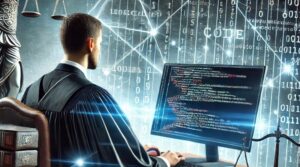In the digital age, self-learning has become an essential skill. We live in a time where the pace of technological change is so rapid that relying solely on formal educational institutions or traditional training is insufficient to stay current. Today, the ability to acquire new knowledge and skills independently not only allows us to adapt to the workforce, but also to exercise a form of personal sovereignty over our own development. It’s not just about learning for the sake of learning, but about having control over what we want to learn and how we go about it, in a global environment where information is just a click away.
Diving into the vast universe of knowledge available online can be intimidating at first, but it also presents a unique opportunity for those who dare to embark on the journey. Best of all, we now have accessible resources and tools for everyone, no matter where you start from. From interactive guides to video tutorials, and even online forums and communities, the world of self-learning has never been so within reach.
The “Get Started” culture
The idea of starting on your own may seem overwhelming, but many of the most advanced technologies and platforms have already made that first step easier with something that’s become part of digital culture: the “Get Started” button. This phrase, found on almost every software, framework, or digital tool page, encapsulates the modern self-learning philosophy. You don’t need deep knowledge or to be an expert to begin. Frameworks like React, languages like Python, or even more specialized platforms like TensorFlow offer simple, beginner-friendly documentation that allows anyone to dive in and start experimenting.
This approach not only helps beginners quickly familiarize themselves with key concepts, but also promotes a mindset of continuous learning. Each “Get Started” is an invitation to take the first step, to learn by doing, and gradually build knowledge from the basics to the more advanced.
Unlimited access to learning resources
The beauty of the digital age is that access to a massive amount of information—often free—has never been easier. Any technology, programming language, or skill is backed by a wealth of resources, ranging from official documentation, user forums, and communities, to tutorials on platforms like YouTube, Discord, or Reddit.
For example, to learn a specific technology, you can start with its official website, which often includes sections with documentation and interactive guides that are generally easy to follow. If you ever get stuck, there’s always a global community ready to help. Sites like StackOverflow have become iconic for solving technical questions, and recently, artificial intelligence tools like ChatGPT or GitHub Copilot have started playing a key role by providing instant answers and useful suggestions.
Additionally, the language barrier has virtually disappeared, thanks to instant translators that allow us to access content in English or other languages with ease. What used to be an obstacle is now a challenge overcome with a click. Knowledge is at everyone’s fingertips, regardless of language.
Tools for self-learning
The tools at our disposal are as varied as they are numerous. A self-taught individual in the digital age has an infinite variety of resources that adapt to their preferences and learning styles. If you prefer reading, the official documentation of a technology will be your ally. If you’re more visual, platforms like YouTube are filled with detailed tutorials created by people who have already walked the path you’re starting.
Forums and online communities, such as those on Reddit or Discord, are places where you can ask questions, share your progress, and learn from the experiences of others. Learning platforms like edX, Coursera, or Udemy offer thousands of courses—some free and others at affordable prices—covering almost any topic of interest. And beyond the traditional platforms, MOOCs (Massive Open Online Courses) provide quality training offered by prestigious universities and institutions.
Each of these resources plays an important role, and knowing how to combine them can make the difference between efficient learning and a frustrating journey. The key is knowing how to navigate through so much information and tools, prioritizing those that align with your goals.
Defining a clear goal
In the face of the vast ocean of available information, it’s crucial to define a clear objective to avoid getting lost in the tide. While it’s true that learning something new is never a waste of time, the most efficient way to make the most of resources is to have a defined goal. Are you looking to learn a new professional skill? Do you want to develop a personal project? Or are you simply interested in exploring a specific topic out of intellectual curiosity?
Defining your purpose from the beginning will allow you to filter the content and focus on what really interests you. However, it’s equally important not to fear changing direction if you discover something new that excites you during the process. Self-learning is a flexible journey, where the destination can change as you acquire more knowledge. At the end of the day, the important thing is that each step you take, whether small or large, contributes to your personal and professional growth.
The digital world offers us all the tools we need to be self-taught. Never before in human history have we had such unlimited access to knowledge. All that’s needed is the will, curiosity, and desire to learn.




